AMD Ryzen 7 8700G and Ryzen 5 8600G Review: Zen 4 APUs with RDNA3 Graphics
by Gavin Bonshor on January 29, 2024 9:00 AM EST- Posted in
- CPUs
- AMD
- APUs
- Phoenix
- 4nm
- Zen 4
- RDNA3
- AM5
- Ryzen 8000G
- Ryzen 7 8700G
- Ryzen 5 8600G
CPU Benchmark Performance: Power, Productivity and Web
Our previous sets of ‘office’ benchmarks have often been a mix of science and synthetics, so this time, we wanted to keep our office and productivity section purely based on real-world performance. We've also incorporated our power testing into this section.
The biggest update to our Office-focused tests for 2024 and beyond includes UL's Procyon software, which is the successor to PCMark. Procyon benchmarks office performance using Microsoft Office applications and Adobe Premier Pro's video editing capabilities.
We are using DDR5-5200 memory as per the JEDEC specifications on the Ryzen 7 8700G and Ryzen 5 8600G, as well as DDR4-3200 on the Ryzen 7 5700G and Ryzen 5 5600G. The same methodology is also used for the AMD Ryzen 7000 series and Intel's 14th, 13th, and 12th Gen processors. Below are the settings we have used for each platform:
- DDR5-5200 CL44 - Ryzen 8000G
- DDR4-3200 CL22 - Ryzen 5000G
- DDR5-5600B CL46 - Intel 14th & 13th Gen
- DDR5-5200 CL44 - Ryzen 7000
- DDR5-4800 (B) CL40 - Intel 12th Gen
Power
The nature of reporting processor power consumption has become, in part, a bit of a nightmare. Historically the peak power consumption of a processor, as purchased, is given by its Thermal Design Power (TDP, or PL1). For many markets, such as embedded processors, that value of TDP still signifies the peak power consumption. For the processors we test at AnandTech, either desktop, notebook, or enterprise, this is not always the case.
Modern high-performance processors implement a feature called Turbo. This allows, usually for a limited time, a processor to go beyond its rated frequency. Exactly how far the processor goes depends on a few factors, such as the Turbo Power Limit (PL2), whether the peak frequency is hard coded, the thermals, and the power delivery. Turbo can sometimes be very aggressive, allowing power values 2.5x above the rated TDP.
AMD and Intel have different definitions for TDP that are, broadly speaking, applied the same. The difference comes from turbo modes, turbo limits, turbo budgets, and how the processors manage that power balance. These topics are 10000-12000 word articles in their own right, and we’ve got a few articles worth reading on the topic.
- Why Intel Processors Draw More Power Than Expected: TDP and Turbo Explained
- Talking TDP, Turbo and Overclocking: An Interview with Intel Fellow Guy Therien
- Reaching for Turbo: Aligning Perception with AMD’s Frequency Metrics
- Intel’s TDP Shenanigans Hurts Everyone
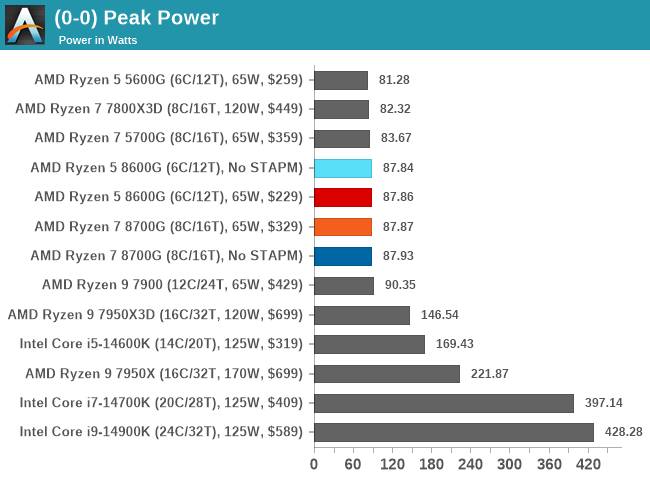
Using a broad range of processors from top to bottom in our analysis, we can see that both the Ryzen 7 8700G and Ryzen 5 8600G APUs pull just under 88 W at full load, which is around 35 W extra than the rated 65 W TDP. This is normal given that AMD and the AM5 platform use another power metric called Package Power Tracking (PPT), which allows more power to the CPU socket. Comparing the Ryzen 8000G series to the Ryzen 5000G series, the Zen 4 models pull around 6% more power at peak loads.
Looking a little deeper into the power of the Ryzen 7 8700G, we've used both the CineBench R23 Multi-Threaded test and the game F1 2022 at 1080p high settings to gauge their different power requirements. Typically, with a heavier CPU load, such as those employed when rendering, we can see CineBench R23 Mt; we consistently drew around 87 to 88 W of power, which is consistent with our peak values.
Using F1 2022 to see how power varies between a rendering workload, depending on how intensive the scene was, we observed between 65 W and 82 W, including the Zen 4 cores and the Radeon RNDA3 graphics processor balancing performance between the two entities. As mentioned, this is above the rated 65 W TDP AMD has given this chip, but as we've found over the years, this isn't an exact science, and TDP figures are to be taken with a pinch of salt, especially on desktop platforms.
With power values at full load between 65 W and 88 W, this means that they are easier to cool, with both the Ryzen 7 8700G and Ryzen 5 8600G both coming with supplied AMD Wraith stock CPU coolers.
Update 02/01/24: We have investigated reports of Skin Temperature-Aware Power Management (STAPM) issues on the Ryzen 8000G APUs; our findings are below.
With F1 2023 as the game of choice and using the AMD Ryzen 7 8700G APU, we sought to investigate issues relating to STAPM limitations. As shown in the above graph, after 3 minutes of sustained gaming, the overall CPU package power dropped by around 22% from a sustained load of between 83-84 W down to around 65 W. Unfortunately, AMD has left STAPM limitations placed on their mobile chips in place for their ported to desktop Ryzen 8000G series, which poses as limiting power has a negative impact on performance, especially where an APU with integrated graphics is concerned. First reported by Gamers Nexus, AMD did respond to them directly about the issue, which is as follows:
"We found out that STAPM is being incorrectly applied to the desktop parts. It shouldn't be applied to the desktop parts. A future BIOS update should correct this behavior. If nothing else, you caught something that is going to help a lot of [customers], so better to catch it sooner than later."
Update 02/23/24: We have retested the prolonged power performance with the latest firmware, and our results are below.
Using the same game (F1 2023) at the same settings (720p High) with the latest firmware that removes STAPM, we can see that there is no power throttling, which we initially saw from our initial testing. We can see that power is sustained for over 10 minutes of testing, and we saw no drops in package power when gaming for a prolonged period of time. We did test this for much longer, but it would have made the chart unreadable, so we opted to show how power remained the same for 10 minutes. The latest firmware on whatever AM5 motherboard is being used, power, and, ultimately, performance remains consistent with what the Ryzen 7 8700G should have been getting at launch. This is also the same for other Ryzen 8000G APUs, as STAPM has now been completely removed from the firmware by AMD.
Productivity and Web
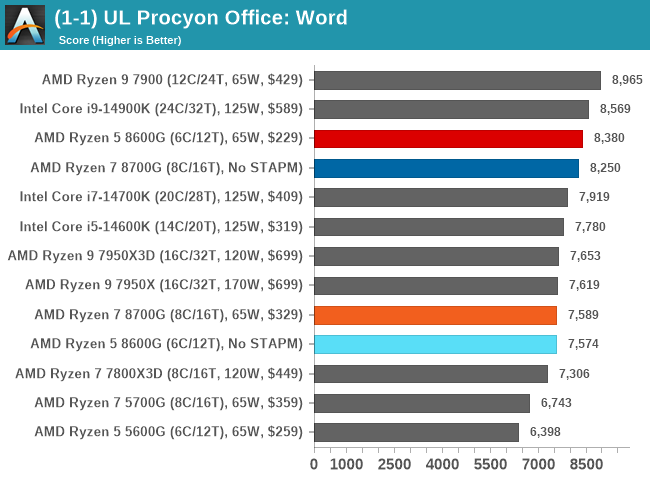
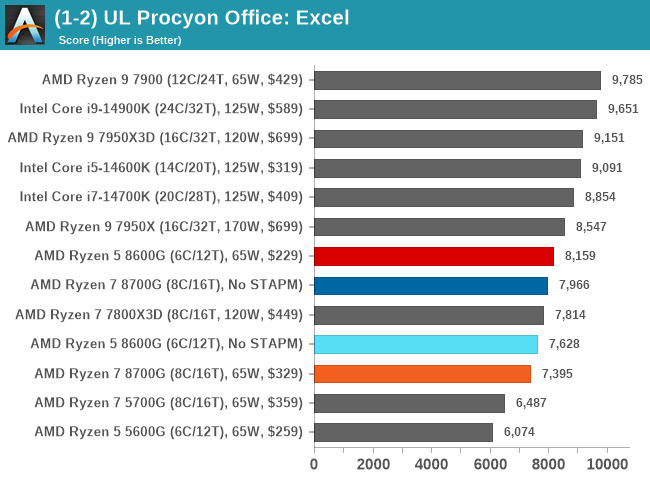
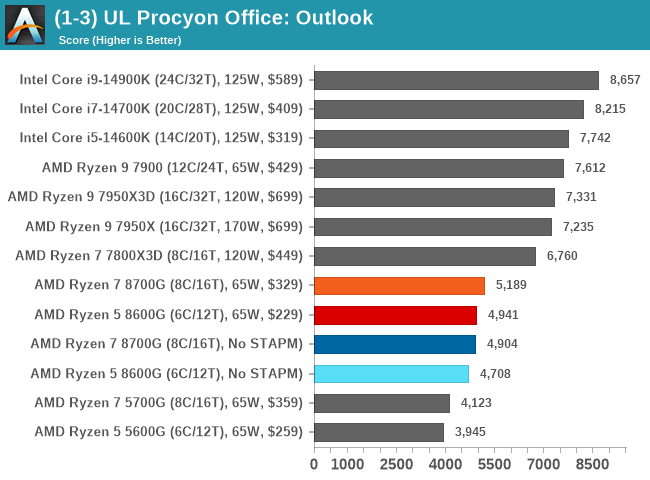
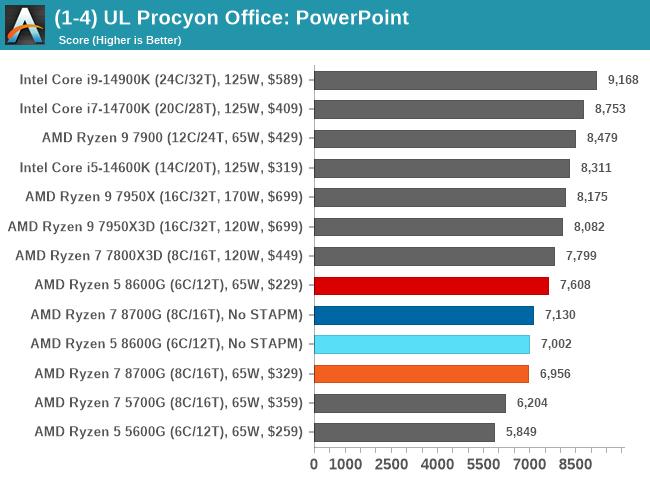
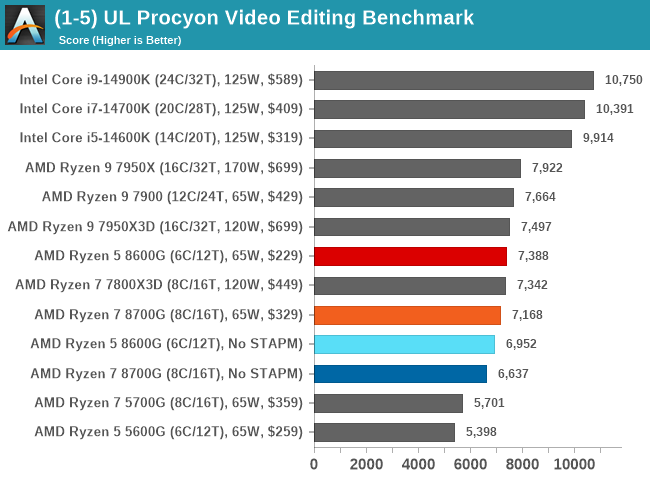
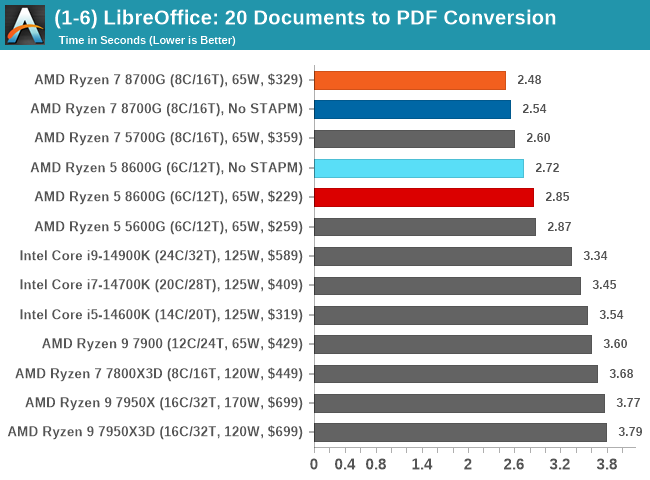
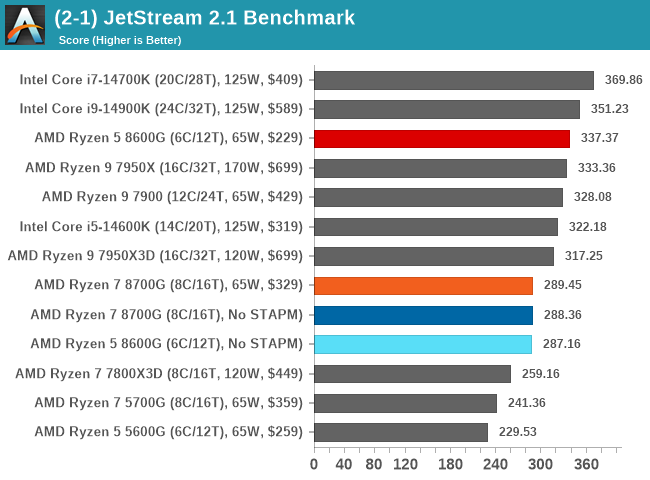
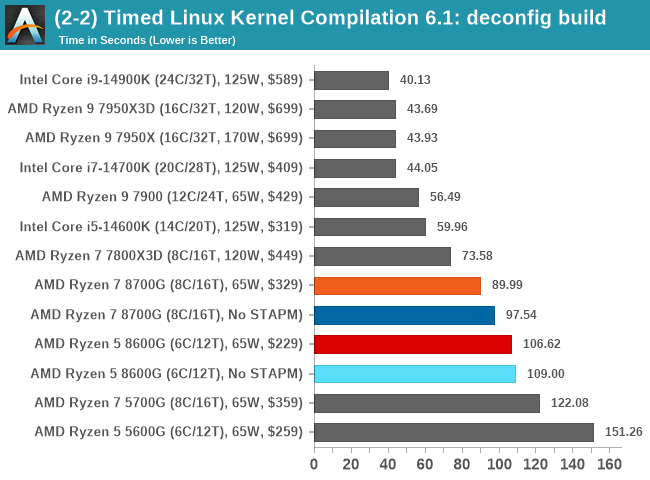
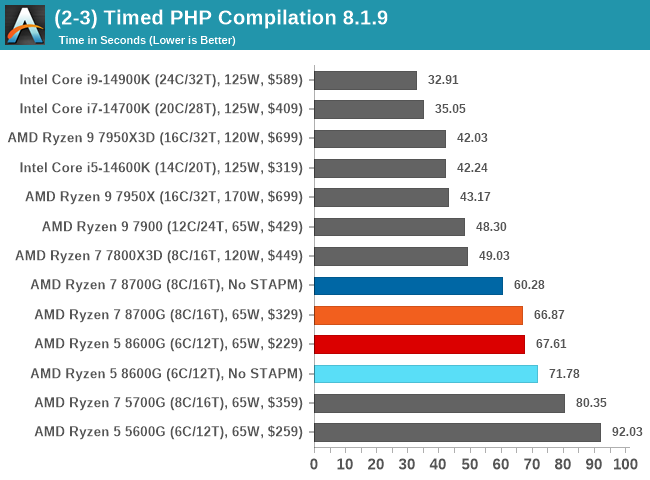
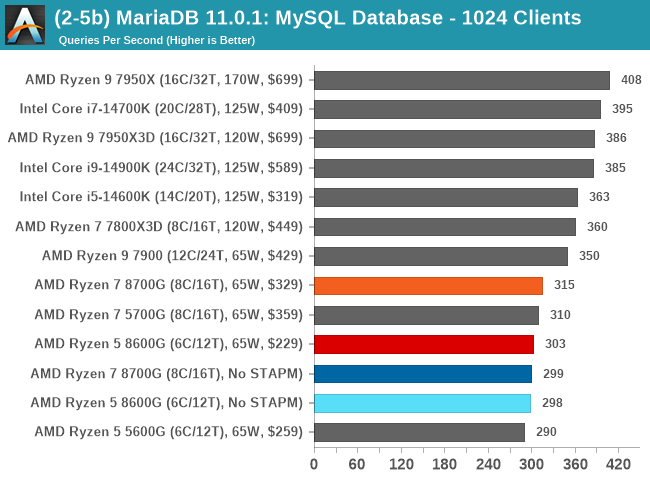
Across our web and productivity section of the suite, we saw performance where we expected to see it, typically above the Ryzen 5000G but below that of the 'proper' Zen 4 desktop chips. We did see strong performance in LibreOffice, which APUs typically do well in.
Re-benchmarking the Ryzen 7 8700G and Ryzen 5 8600G with AMD and ASUS's latest firmware, which removes the STAPM limitations, we see a mixed bag in our results. In some of the benchmarks, we mostly saw some regression in performance overall.


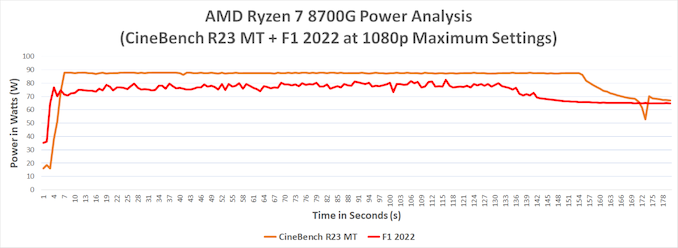
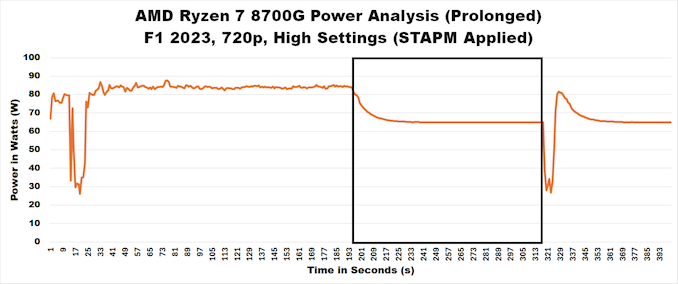
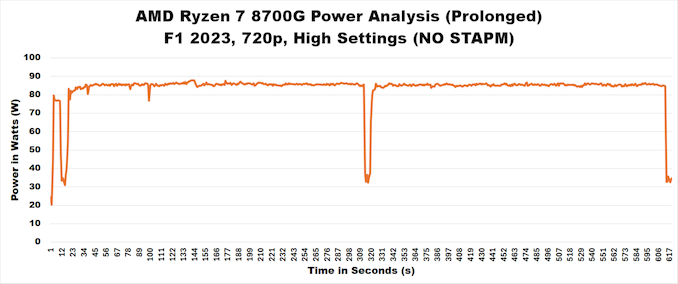








111 Comments
View All Comments
GeoffreyA - Wednesday, January 31, 2024 - link
On another point, I still think Anand's CPU reviews were better than Ian's. Ian was good but tended to get lost in the details, whereas Anand had an abstraction to his writing, and made computers inspiring, as if you were reading a story. Even the titles were memorable.TheinsanegamerN - Wednesday, January 31, 2024 - link
If you are going by steam, there are nearly as many sub 1080p as there are 1080p gamers. And those sub 1080p users would love the iGPU.If you dont like it, feel free not to read it. Or do your own review if you are so much smarter.
FWhitTrampoline - Tuesday, January 30, 2024 - link
Gamers Nexus has found an Issue with the Ryzen 8000G APUs in the form of some Mobile Variants of the 7000/Phoenix mobile processor firmware settings that should have been removed for the Desktop Ryzen 8000G series Phoenix derivatives. And that has something to do with Laptop/Handheld skin temperature regulation where in order to account for that in laptops/handhelds the processors are being trotted in the Desktop Ryzen 8000G SKUs as if that's in a mobile laptop/handheld from factor device! So watch GN's latest video from today and see that more re-testing may be in order there!nandnandnand - Tuesday, January 30, 2024 - link
It's Skin Temperature Aware Power Management (STAPM).Kinematics - Tuesday, January 30, 2024 - link
The 88 W peak draw is about 25 W above the 65 W TDP, not 35.mikato - Tuesday, January 30, 2024 - link
Are we not doing idle power consumption any more?t.s - Tuesday, January 30, 2024 - link
This depend significantly from PSU and motherboard you're using. anything x70 chipset 24ATX PSU will boost the idle power vs when using x20 and 12VO. But yes, I'm curious too with their setup idle power. My guess, around 50W -> 24ATX 1000W, 6950 GPU.mannen - Tuesday, January 30, 2024 - link
You missed to compare these against the Ryzen 5 7600 and the Ryzen 7 7700 CPUs.That would have been very interesting since they are equivalent (but desktop) parts with the same number of cores/threads. To compare to Ryzen 9 makes no sense since it's not within the same budget class.
I for example am interested in the 8600G, but also looking at the 7600 and keeping my old GPU. Since I don't game a lot, I can easily sacrifice the old GPU but I want to know how much CPU performance I'm giving up.
TheinsanegamerN - Wednesday, January 31, 2024 - link
Well the other commenters here are throwing huge temper tantrums over CPU benchmarks being included in this review, so you may be better off looking elsewhere.lorribot - Tuesday, January 30, 2024 - link
Would have been nice to see a comparison with discrete cards like a RTX2060/3060.